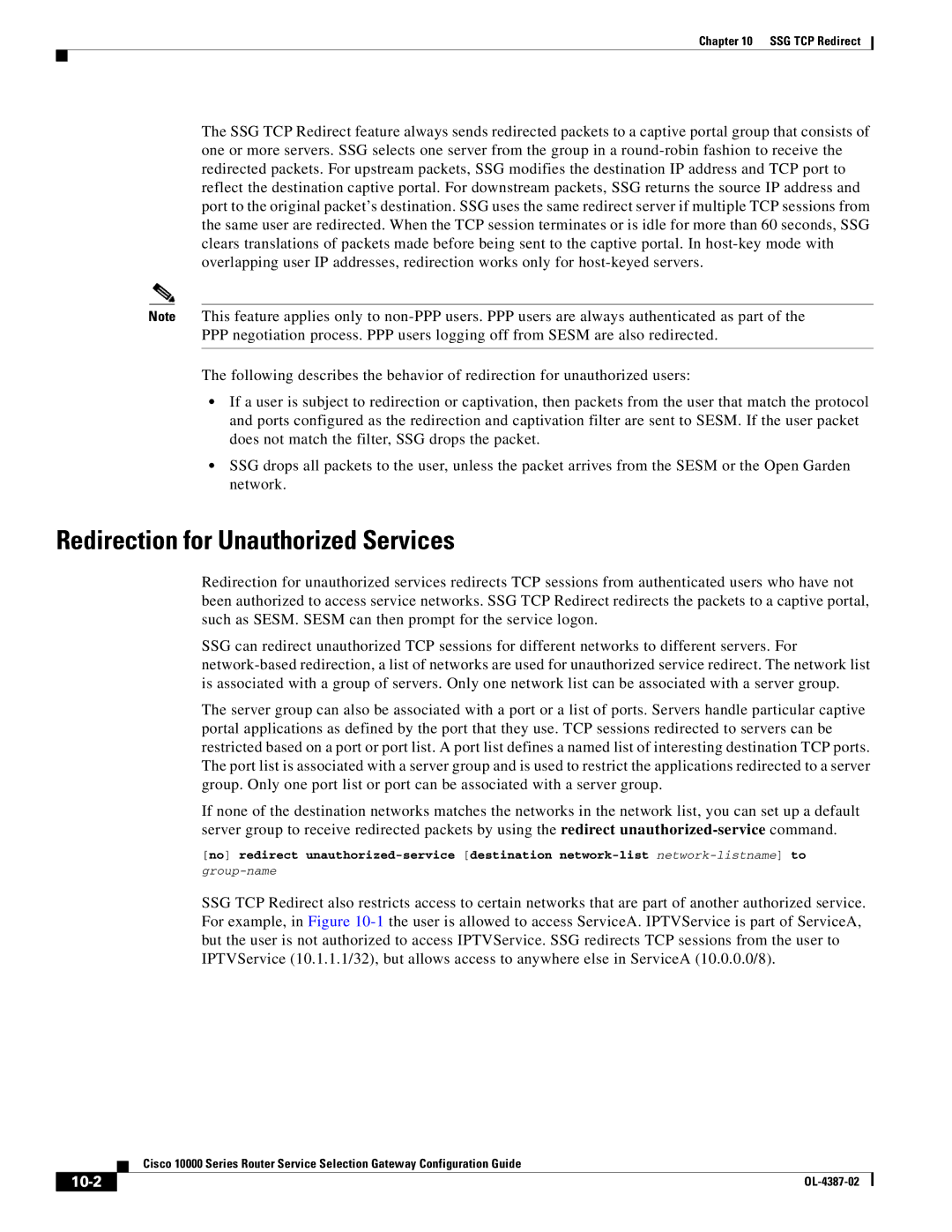
Chapter 10 SSG TCP Redirect
The SSG TCP Redirect feature always sends redirected packets to a captive portal group that consists of one or more servers. SSG selects one server from the group in a
Note This feature applies only to
The following describes the behavior of redirection for unauthorized users:
•If a user is subject to redirection or captivation, then packets from the user that match the protocol and ports configured as the redirection and captivation filter are sent to SESM. If the user packet does not match the filter, SSG drops the packet.
•SSG drops all packets to the user, unless the packet arrives from the SESM or the Open Garden network.
Redirection for Unauthorized Services
Redirection for unauthorized services redirects TCP sessions from authenticated users who have not been authorized to access service networks. SSG TCP Redirect redirects the packets to a captive portal, such as SESM. SESM can then prompt for the service logon.
SSG can redirect unauthorized TCP sessions for different networks to different servers. For
The server group can also be associated with a port or a list of ports. Servers handle particular captive portal applications as defined by the port that they use. TCP sessions redirected to servers can be restricted based on a port or port list. A port list defines a named list of interesting destination TCP ports. The port list is associated with a server group and is used to restrict the applications redirected to a server group. Only one port list or port can be associated with a server group.
If none of the destination networks matches the networks in the network list, you can set up a default server group to receive redirected packets by using the redirect
[no] redirect
SSG TCP Redirect also restricts access to certain networks that are part of another authorized service. For example, in Figure
Cisco 10000 Series Router Service Selection Gateway Configuration Guide
|
|
|
|
